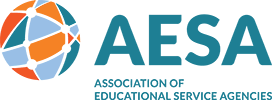June 27, 2025
Curated by our advocacy partners: Universal Service Administrative Company (USAC) and AASA, The School Superintendents Association
This week brought a wave of encouraging developments for educational equity and funding access across the country.
Supreme Court Upholds Universal Service Fund (USF) Program
In a major victory for broadband access in schools and libraries, the U.S. Supreme Court has upheld the FCC’s Universal Service Fund (USF) program. This decision confirms that the Universal Service Administrative Company (USAC) will continue administering the USF program under the FCC’s oversight, ensuring ongoing support for critical connectivity programs like E-rate and Lifeline.
Voucher Proposal Fails Byrd Rule Test
A separate piece of welcome news: the controversial federal voucher proposal does not currently meet the requirements of the Byrd Rule and, therefore, cannot move forward through budget reconciliation in its present form. While the Senate may attempt to revise and resubmit the proposal, this development marks a significant roadblock for voucher expansion efforts—and a major win for public schools.
ESSER Late Liquidation Flexibility Restored for All States
In response to ongoing litigation, the U.S. Department of Education has reversed its March 28, 2025 decision that cut off approved late liquidation extensions for non-plaintiff states. In a letter sent by Secretary McMahon to non-plaintiff states and territories, the Department announced a return to the previous ESSER payment process. This change brings equity between plaintiff and non-plaintiff states and allows all states to resume reimbursement or liquidation of pre-approved ESSER projects that were impacted by the March cutoff.
For school districts, this means if you had a previously approved ESSER late liquidation application and your reimbursements were halted, you may now request reimbursement and resume payments on those projects until further notice. This flexibility will remain in place while litigation is ongoing.
Next Steps for States and Districts
To take advantage of this restored flexibility, states must follow the reimbursement and payment request processes that were in place before March 28, 2025. For guidance, be sure to review the updated Liquidation Extension Resources and accompanying FAQs.
Together, these updates represent meaningful progress for education leaders and communities. Whether it’s securing broadband access, protecting public education funding, or restoring ESSER reimbursements, advocacy and persistence are paying off.
